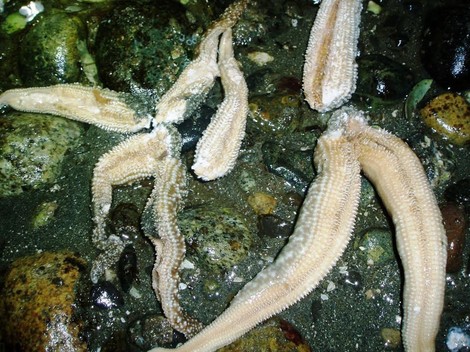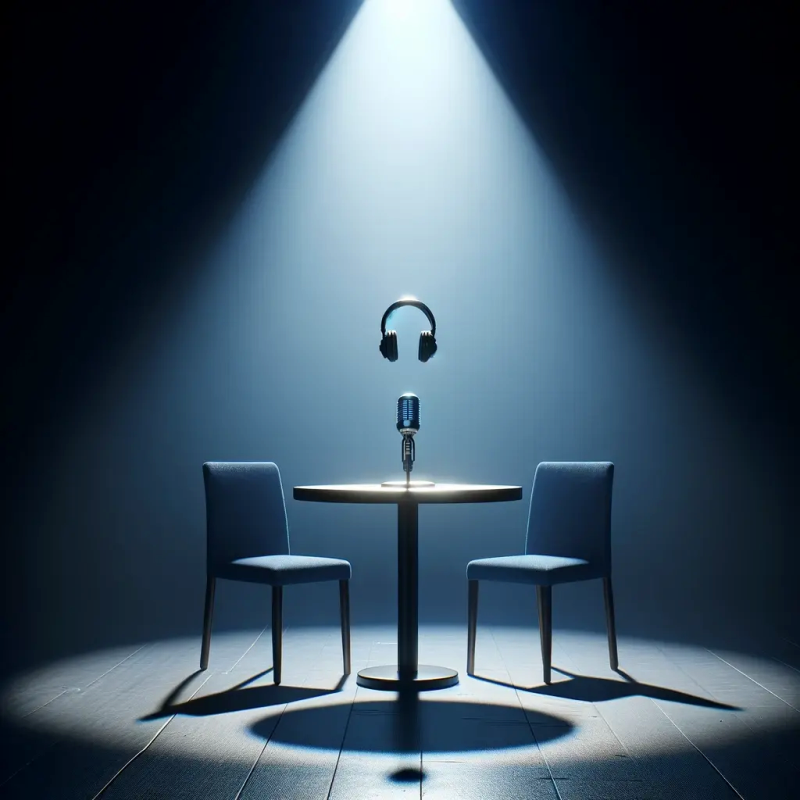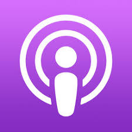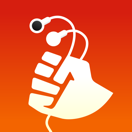sharing is caring
ist wirklich so!
Vielen Dank fürs Teilen!
Kluge Köpfe filtern für dich relevante Beiträge aus dem Netz.
Entdecke handverlesene Artikel, Videos und Audios zu deinen Themen.

Benedikt Sarreiter ist Mitglied des Redaktionsbüros Nansen & Piccard, schreibt für verschiedene Medien, ist Textchef des Schweizer du-Magazins und hat 2015 mit Paul-Philipp Hanske das Buch "Neues von der anderen Seite. Die Wiederentdeckung des Psychedelischen" bei Suhrkamp veröffentlicht. Er lebt in München.
Der Philosoph David Egan erklärt in diesem Text, warum Seesterne uns näher sind, als wir denken, wenn wir sie vertrocknet am Strand finden. Offensichtlich ist die Verwandtschaft natürlich nicht:
They have no brains, just a ring of nerve cells encircling the central mouth and extending up the arms. At the tip of each arm, bunchings of light-sensitive cells serve as rudimentary eyes—starfish effectively see with their fingertips. The individual arms are surprisingly autonomous. The body follows whichever arm is most excited by what it sees or senses with its tube feet—in addition to serving as fingers and feet, these hydraulically-powered wonders are exquisitely sensitive organs of touch, taste, and smell, as well as accessory gills. This decentralized organization makes starfish remarkably regenerative. Not only can individuals regrow severed arms, but in some species, severed arms can regrow new bodies.
Nun, mit unseren Fingern können wir nicht sehen (auch wenn das ein tolles Feature wäre), auch wachsen uns keine Gliedmaßen nach. Nahe sind wir dem Seestern woanders:
Most animals—ants, octopuses, and the rest—form the mouth first. These are the protostomes. That alternative evolutionary pathway that starfish and humans followed makes us deuterostomes: We’re first and foremost assholes.
Und aus der Perspektive der Tiere bleiben wir es wohl auch ... Seesterne und wir durchlaufen also als Embryo eine ähnliche Entwicklung und es gibt noch eine andere Verbindung.
Like us, starfish have felt the bite of a deadly pandemic in which their cuddling instincts have cost them dearly. “Sea star wasting syndrome” begins like melancholia and ends like a zombie apocalypse. At first, an afflicted starfish grows listless and loses interest in food. Then, white lesions appear on its body as the body tissues decay. Its tube feet lose their grip and the hydraulic system that pumps water through the body stops working so that the starfish collapses in on itself. Individual arms fall off one by one as the body disintegrates. Some of the arms keep crawling for a while after they’ve fallen from the body—literally the walking dead, infecting the healthy starfish they come into contact with. Eventually the arms, too, gradually dissolve into a white mush.
Schrecklich. Wir haben also sogar einen gemeinsamen Feind. Viren. Also wenn ihr das nächste einen Seestern seht, seid nett zu ihm, sie gehören zu uns, wir waren beide mal ausschließlich Arschlöcher.

Quelle: David Egan Bild: Michael Kyte/UC S... EN hedgehogreview.com
Bleib immer informiert! Hier gibt's den Kanal Kopf und Körper als Newsletter.
Einfach die Hörempfehlungen unserer Kurator'innen als Feed in deinem Podcatcher abonnieren. Fertig ist das Ohrenglück!


Öffne deinen Podcast Feed in AntennaPod:
Wenn alles geklappt hat,
kannst du das Fenster schließen.

Öffne deinen Podcast Feed in Apple Podcasts:
Wenn alles geklappt hat,
kannst du das Fenster schließen.

Öffne deinen Podcast Feed in Downcast:
Wenn alles geklappt hat,
kannst du das Fenster schließen.

Öffne deinen Podcast Feed in Instacast:
Wenn alles geklappt hat,
kannst du das Fenster schließen.

Öffne deinen Podcast Feed in Apple Podcasts:
Wenn alles geklappt hat,
kannst du das Fenster schließen.

Öffne deinen Podcast Feed in Podgrasp:
Wenn alles geklappt hat,
kannst du das Fenster schließen.

Bitte kopiere die URL und füge sie in deine
Podcast- oder RSS-APP ein.
Wenn du fertig bist,
kannst du das Fenster schließen.

Öffne deinen Podcast Feed in gpodder.net:
Wenn alles geklappt hat,
kannst du das Fenster schließen.

Öffne deinen Podcast Feed in Pocket Casts:
Wenn alles geklappt hat,
kannst du das Fenster schließen.